The Sounds of English (R vs L) (S vs TH)

How to Teach Proper Pronunciation
If you are an ESL student, English pronunciation is often difficult to master.
This is because in some languages (especially in Asia), sounds like /TH/ and /R/ simply don’t exist.
A lot of my students have found it helpful to know exactly where to place their tongue and teeth before they learn the sounds of English.
These diagrams will certainly help you improve your English pronunciation. But first, let’s examine the anatomy of the mouth.
The Anatomy of Your Mouth
When speaking in English, it’s helpful to know how native speakers use their mouth. Whether you’re using adjectives/adverbs or putting together sentences with transition words, you’ll use a wide range of sounds of English.
In the diagram below, it displays some of the most common features of a mouth.

If you’re just starting out, you may surprisingly make use of some parts of your mouth you haven’t used before.
For example, certain sounds of English use tongue, teeth, and the roof of your mouth. This can be very foreign for ESL students and often requires a closer look.
/TH/ sound
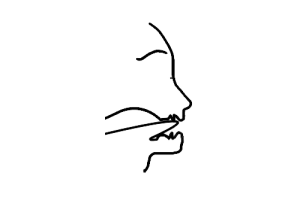
For the /TH/ sound, your tip of the tongue goes in between your teeth.
/S/ sound
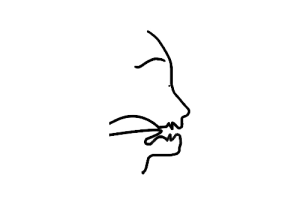
When you use the /S/ sound, your tongue goes behind your teeth and teeth go together.
/L/ sound
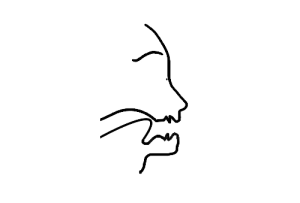
For the /L/ sound, your tip of the tongue goes on the roof of your mouth.
/R/ sound

When you use the /R/ sound, your tip of the tongue does not go on the roof of your mouth.
/B/ sound
For the /B/ sound, your lips are together and snap with a small puff of air coming out of your mouth.

/W/ sound
Similar to the /B/ sound, your lips should be full and round. But your lips don’t really touch and curls out as shown in the diagram.
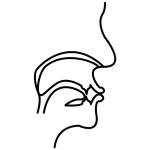
/V/ sound
For the /V/ sound, your top teeth touch your bottom lips when saying the sound.
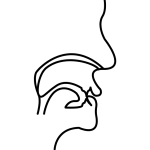
/Z/ sound
When you use the /Z/ sound, the tip of your tongue is close to the roof of your mouth without actually touching it.

Well, there you have it. These are some of the toughest sounds to pronounce in the English language.
English Pronunciation
For ESL students, English pronunciation needs time and practice to master. With this in mind, you learn these concepts in the zone of proximal development.
These diagrams displayed the anatomy of the mouth for some of the most difficult English pronunciation.
What other English sounds of English would you like to see here? What English pronunciation is troublesome for you?
Please let us know with a comment below.

I think another difficult sound to teach would be /g/ as in ‘guh’. This requires raising the back of the tongue as well as placing the tip on the roof of the mouth. A difficult concept to explain to someone – raise the back of your tongue – perhaps begin by teaching them to growl…… grrrrrr. Ask the question “How would an angry dog sound?”
I watch online lessons from a teacher of an Asian language. The teacher has trouble pronouncing three. I am a native speaker of American English. When I say three, I start pronouncing THREE with the tip of my tongue against most or all of the back of my front teeth. When I look at the diagrams above for TH and R, I don’t see the connection between the position of the tongue between the teeth for TH and the tip of the tongue behind the teeth at the base of the mouth for R to make the THR sound. The teacher seems to say THWEE for THREE (and TWEHS for tres in Spanish) and has no trouble correctly pronouncing TRUMP.
Hi, how are you, I do have a question, I started teaching, six years ago, and I am looking for a way to help Spanish speakers to pronounce would correctly, as they tend to articulate it “Gould”
The only way I could think of is to ask the students what sound a dog makes when he barks, wu wu.. ok, great, that is how would is pronounced!
Do you have a better way to help them?
Thanks a lot for your reply,
Best regards,
Carol
Hello, I teach English in a Latin american country, I found this to be very useful material. It would be useful to Have these diagrams in a chart format to maybe give away. I might even be able to translate the explanation for each sound. Other useful diagrams in this language in particular are the y, and j sound. I know it isn’t necessarily something you might do but if you are willing it would be wonderful to have these diagrams in a downloadable pdf format.
Hi Manon, I apologize but I don’t have it in PDF format